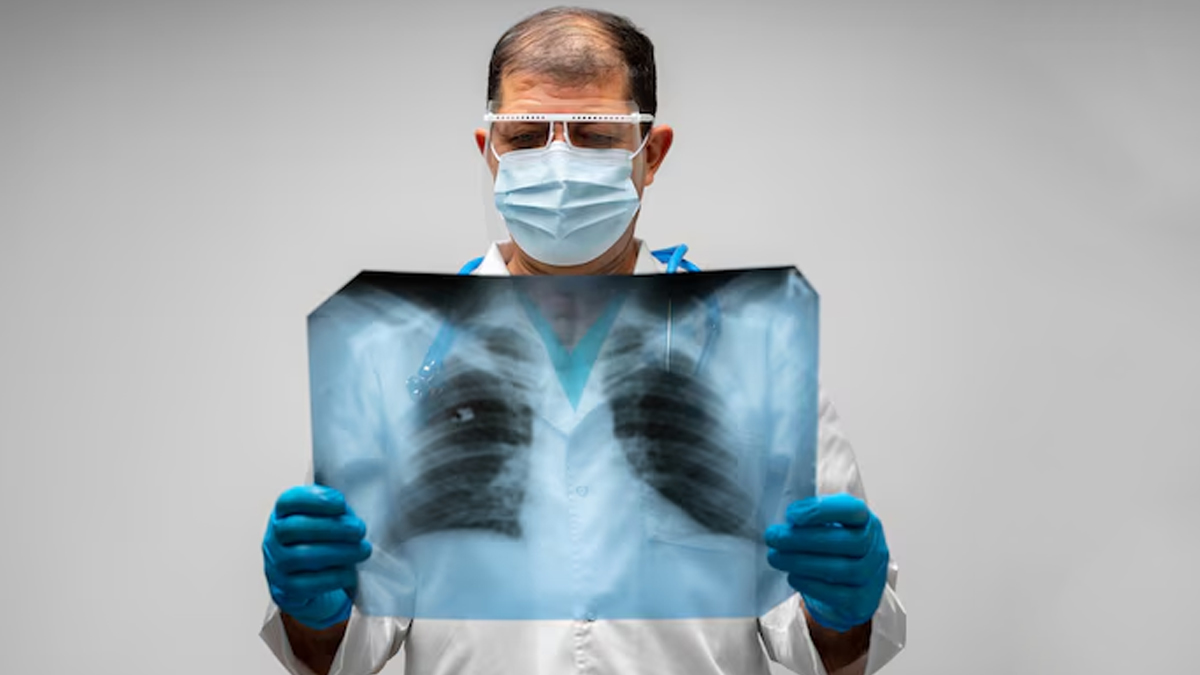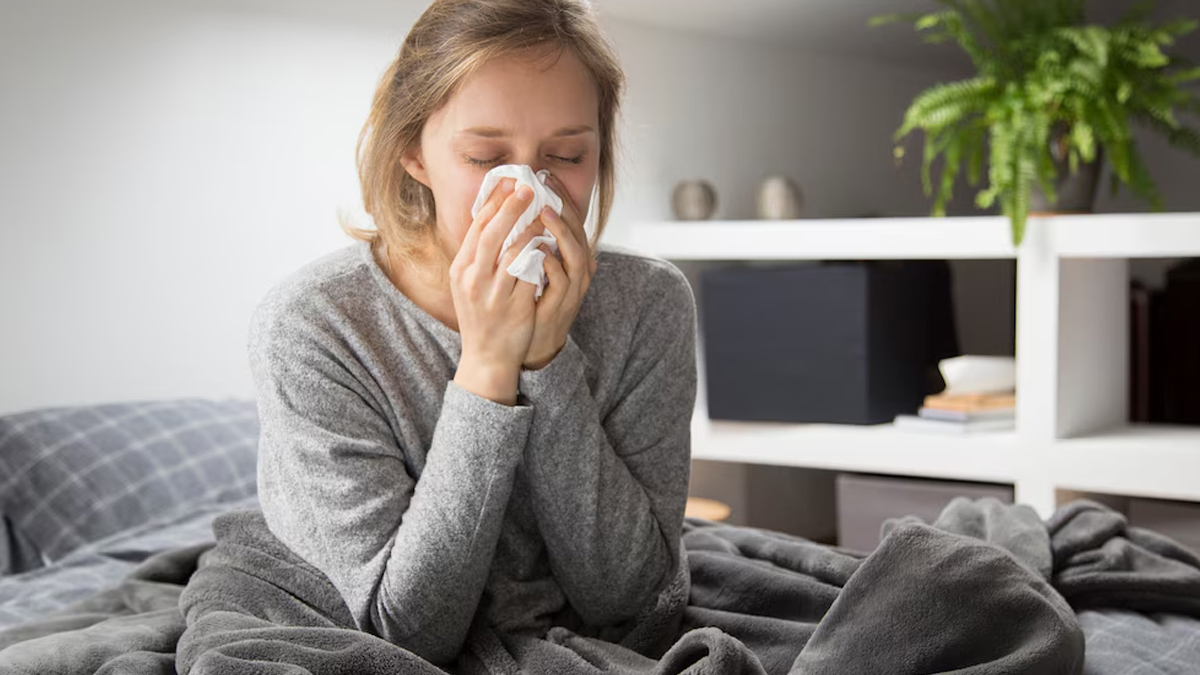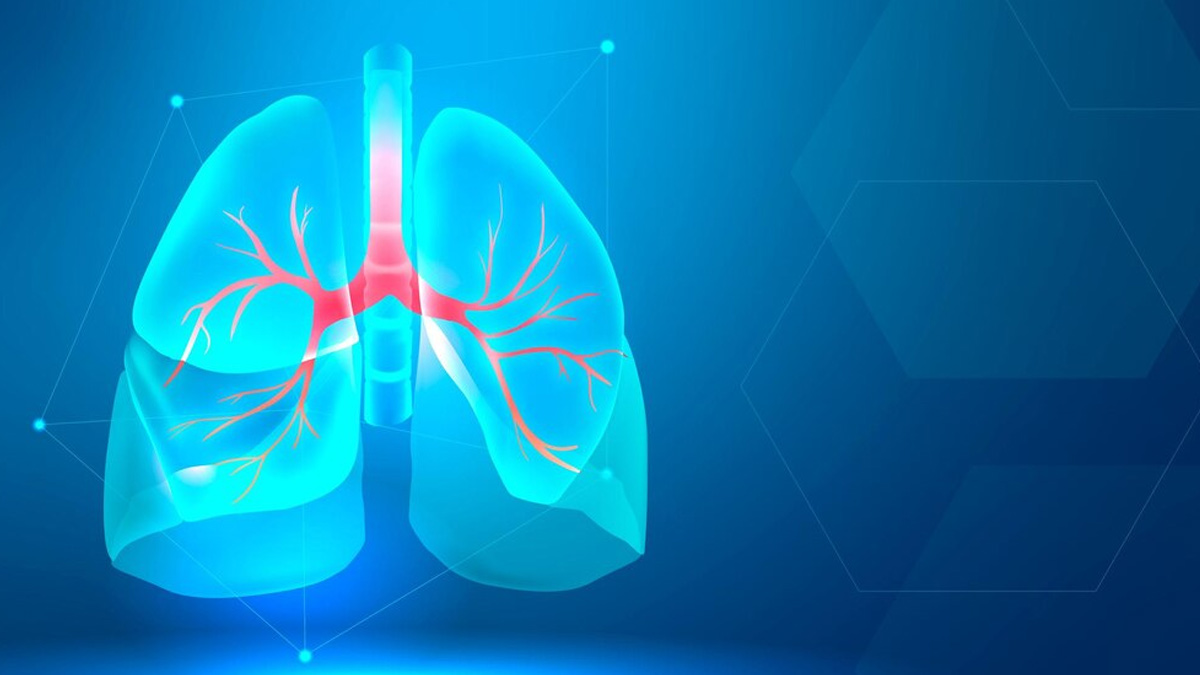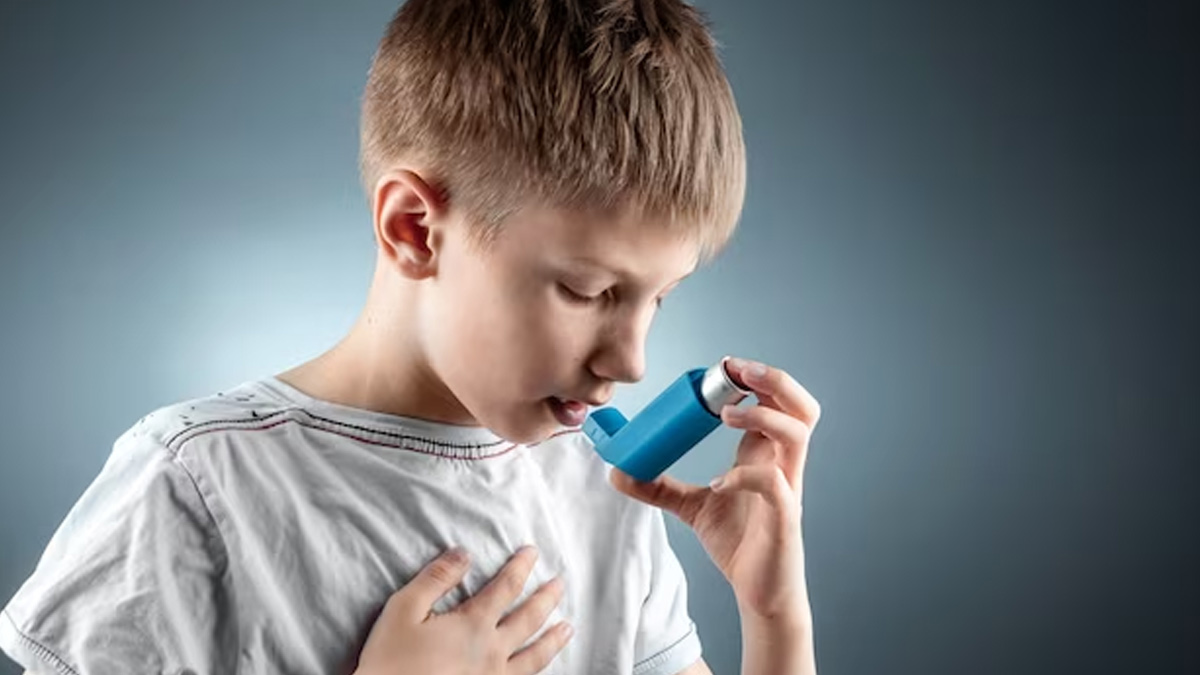
Respiratory diseases are a broad category of ailments that affect the lungs and other parts of the respiratory system. These diseases range from mild conditions like the common cold to severe and chronic disorders such as chronic obstructive pulmonary disease (COPD) and asthma. Understanding the symptoms, causes, types, and preventive measures is crucial for managing these diseases effectively and maintaining respiratory health. To know more about the same, the Onlymyhealth team spoke to Dr Kinjal Modi, Consultant, Pulmonology, PD, Hinduja Hospital & MCR, Khar.
Table of Content:-
Understanding the Respiratory System
The National Heart, Lung, and Blood Institute states that the respiratory system comprises the nose, throat, trachea, bronchi, and lungs. Its primary function is to facilitate the exchange of oxygen and carbon dioxide between the body and the environment. When any part of this system is compromised, it can lead to respiratory diseases, which can significantly impact overall health and quality of life.
Common Symptoms of Respiratory Diseases
“The symptoms of respiratory diseases can vary widely depending on the specific condition,” said Dr Modi. He listed some common symptoms that indicate a respiratory disease:
- Coughing: Persistent coughing can indicate conditions such as asthma, bronchitis, or COPD.
- Shortness of Breath: Difficulty breathing or shortness of breath is a hallmark symptom of many respiratory diseases.
- Wheezing: A whistling or squeaky sound while breathing is often associated with asthma and COPD.
- Chest Pain or Tightness: Discomfort in the chest can occur with infections like pneumonia or chronic conditions like asthma.
- Fatigue: Respiratory diseases can cause fatigue due to the body's increased effort to breathe and reduced oxygen levels.
- Mucus Production: Increased mucus or phlegm production can be a sign of infections or chronic bronchitis.
- Fever: A high temperature can accompany respiratory infections like pneumonia or tuberculosis.
- Bluish Lips or Fingernails: This can indicate low oxygen levels in the blood, a serious symptom requiring immediate medical attention.

Causes of Respiratory Diseases
Respiratory diseases can result from a variety of causes, informed Dr Modi. He shared a few reasons that can cause someone to develop respiratory disorders by harming the respiratory system:
- Infections: Bacterial, viral, and fungal infections can cause respiratory diseases like pneumonia, bronchitis, and tuberculosis.
- Allergens: Exposure to allergens such as pollen, dust mites, and pet dander can trigger allergic reactions leading to asthma or allergic rhinitis.
- Smoking: Tobacco smoke is a leading cause of respiratory diseases, including COPD, lung cancer, and chronic bronchitis.
- Pollution: Air pollution from industrial emissions, vehicle exhaust, and other sources can contribute to respiratory problems.
- Genetics: Some respiratory diseases, like cystic fibrosis or asthma, have a genetic basis.
- Occupational Hazards: Long-term exposure to dust, chemicals, and other irritants at work can cause diseases like occupational asthma or pneumoconiosis.
- Chronic Conditions: Conditions like asthma, COPD, and interstitial lung disease can predispose individuals to recurrent respiratory issues.
Also Read: Respiratory Disease: What Is The Best Treatment For Asthma?

Major Types of Respiratory Diseases
There are numerous respiratory diseases, but some of the most significant ones include:
Asthma
According to the World Health Organization (WHO) estimates, around 262 million individuals were diagnosed with asthma in 2019. Listing the most common symptoms, causes, and treatment of asthma, Dr Modi said:
- Symptoms: Wheezing, shortness of breath, chest tightness, coughing, particularly at night or early in the morning
- Causes: Asthma is triggered by allergens, respiratory infections, physical activity, cold air, and stress.
- Management: Asthma is managed with inhalers (bronchodilators and corticosteroids), avoiding triggers, and allergy medications or immunotherapy.
Chronic Obstructive Pulmonary Disease (COPD)
According to the National Heart, Lung, and Blood Institute, COPD is a progressive lung disease encompassing chronic bronchitis and emphysema. It is characterised by airflow obstruction and difficulties in breathing. Globally, over 16 million individuals are affected by COPD. As per Dr Modi, the common symptoms, causes, and treatment modalities for COPD include:
- Symptoms: Persistent cough with mucus, shortness of breath, wheezing, and frequent respiratory infections.
- Causes: Smoking is the primary cause of COPD, but long-term exposure to lung irritants like air pollution and chemical fumes can also contribute.
- Management: COPD is managed with bronchodilators, steroids, oxygen therapy, pulmonary rehabilitation, and lifestyle changes like quitting smoking.
Also Read: 7 Common Childhood Respiratory Diseases

Pneumonia
The United Nations Children's Fund (UNICEF) states that pneumonia is the primary cause of death among children due to infectious diseases, claiming over 700,000 lives of children under five each year, which is approximately 2,000 deaths per day, including around 190,000 newborns. Dr Modi shared:
- Symptoms: High fever, chills, cough with phlegm, chest pain, shortness of breath, and fatigue.
- Causes: Pneumonia can be caused by bacteria, viruses, or fungi.
- Management: Treatment depends on the cause and may include antibiotics for bacterial infections, antiviral medications, and supportive care such as rest and fluids.
Tuberculosis (TB)
WHO reports that tuberculosis (TB) affects nearly 10 million individuals annually, leading to 1.5 million deaths despite being preventable and treatable. Dr Modi shared the symptoms, causes, and management of TB:
- Symptoms: Persistent cough lasting more than three weeks, chest pain, coughing up blood, fatigue, fever, night sweats, and weight loss.
- Causes: TB is caused by the bacterium Mycobacterium tuberculosis and is spread through the air when an infected person coughs or sneezes.
- Management: TB is treated with a course of antibiotics over several months. Prompt diagnosis and adherence to the treatment regimen are crucial to prevent the spread of TB.
Interstitial Lung Disease (ILD)
A study published in the CHEST Journal highlighted over 654,000 cases of interstitial lung disease (ILD) in the United States in 2019. Dr Modi listed:
- Symptoms: Shortness of breath, dry cough, fatigue, unexplained weight loss, and clubbing of fingers.
- Causes: ILD encompasses a group of lung disorders characterised by inflammation and scarring of the lung tissue. Causes can include long-term exposure to hazardous substances, autoimmune diseases, and certain medications.
- Management: Treatment focuses on managing symptoms and may include medications to reduce inflammation, oxygen therapy, pulmonary rehabilitation, and, in severe cases, lung transplantation.
Also Read: Respiratory Disease: The 5 Most Common Types of Respiratory Diseases

Lung Cancer
According to World Cancer Research Fund International, in global cancer statistics, lung cancer ranks as the second most prevalent form of cancer. Among males, it stands as the most frequently diagnosed cancer, while among females, it holds the position as the second most commonly diagnosed cancer. The year 2020 witnessed an alarming count of over 2.2 million newly reported cases of lung cancer globally. Dr Modi listed the symptoms, causes, and management of lung cancer:
- Symptoms: Persistent cough, coughing up blood, chest pain, shortness of breath, hoarseness, unexplained weight loss, and fatigue.
- Causes: The primary cause of lung cancer is smoking, but exposure to radon gas, asbestos, and other carcinogens also increases the risk.
- Management: Treatment options depend on the type and stage of cancer and may include surgery, radiation therapy, chemotherapy, targeted therapy, and immunotherapy.
Prevention of Respiratory Diseases
Preventing respiratory diseases involves a combination of lifestyle changes, vaccinations, and environmental modifications:
Avoid Smoking
Dr Modi said, “If you smoke, quitting is the most crucial step to prevent respiratory diseases. Seek support from healthcare providers, counselling, and smoking cessation programs. Moreover, stay away from environments where you might be exposed to secondhand smoke.”
Minimise Exposure to Pollutants
“Ensure good ventilation, use air purifiers, and avoid using harsh chemicals indoors,” suggested Dr Modi. “Stay indoors on days when air pollution levels are high, and wear masks if necessary,” he added.
Get Vaccinated
There are three vaccines that you should take to prevent respiratory diseases:
- Influenza Vaccine: Annual flu vaccinations can prevent respiratory infections like influenza.
- Pneumococcal Vaccine: This vaccine protects against pneumococcal diseases, including pneumonia.
- COVID-19 Vaccine: Ensure you are up-to-date with COVID-19 vaccinations to prevent severe respiratory illness.

Practice Good Hygiene
Dr Modi suggested, “Regularly wash your hands with soap and water to prevent the spread of respiratory infections. Stay away from individuals who are sick and avoid crowded places during flu season,”
Manage Allergies
Work with an allergist to identify and avoid allergens that trigger respiratory symptoms, said Dr Modi and recommended using prescribed medications to control allergy symptoms.
Regular Exercise
Staying active by engaging in regular physical activity can help you strengthen your respiratory muscles and improve lung function.
Healthy Diet
Dr Modi suggested eating nutritious food to prevent respiratory diseases. He said, “Eat a balanced diet rich in fruits, vegetables, whole grains, and lean proteins to support overall health and immunity.”
Monitor and Manage Chronic Conditions
Dr Modi said “Adhering to prescribed treatment plans for chronic conditions like asthma and COPD, and having regular medical check-ups to monitor your respiratory health and adjust treatments as needed to avoid respiratory diseases.”
Also Read: What Is the Main Cause of Pulmonary Fibrosis?
Respiratory diseases can have a significant impact on quality of life, but understanding their symptoms, causes, major types, and prevention strategies can help manage and mitigate their effects. By adopting a healthy lifestyle, avoiding smoking, minimizing exposure to pollutants, staying up-to-date with vaccinations, and following medical advice, individuals can protect their respiratory health and reduce the risk of developing serious respiratory conditions. Regular check-ups and early intervention are key to maintaining optimal respiratory function and overall well-being.
Also watch this video
Read Next
Living with Thalassemia: Add These 5 Essential Nutrients To Your Diet To Manage The Condition
How we keep this article up to date:
We work with experts and keep a close eye on the latest in health and wellness. Whenever there is a new research or helpful information, we update our articles with accurate and useful advice.
Current Version